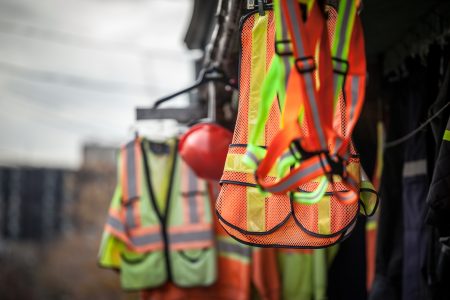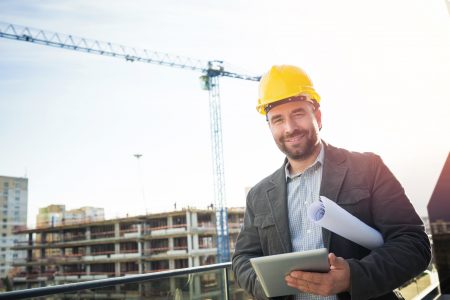The Path to Net Zero Emissions in Federal Buildings

Sustainability is not a new concept, but it is one that is now being taken quite seriously as governments around the world prioritize emission reduction goals. The United States has pledged a goal of reaching net-zero emissions no later than 2050. It’s a challenging goal, but one that starts with one project at a time.
As the federal government is the largest owner and occupier of space, it makes sense that federal buildings and real estate portfolios are key in these initiatives. With more than 363 million square feet under management, new federal government efforts won’t just have a true impact, they will also show the private sector how it can be done.
Sustainability Now a Priority in Federal Buildings
While we often think of other contributors to greenhouse gas emissions such as automobiles and air travel, buildings actually represent as much as 40 percent of global carbon emissions. Add in the rising energy costs to power, cool, and heat buildings, and the federal government’s interest in making buildings more sustainable becomes a logical priority.
In 2022, the Biden Administration reprioritized this even further with the announcement of the Federal Building Performance Standard. This new initiative requires all federal buildings to eliminate on-site emissions in 30% of its building space by 2030. Additionally, all federal buildings are required to achieve net-zero emissions by 2045. Depending on location, some federal buildings are also impacted by state and local mandates that drive these initiatives even further.
Benefits of High-Performance Buildings
Implementing new standards typically means retrofits to existing buildings rather than new construction, though the federal government does occasionally engage in new construction projects. Whether retrofit or new construction, high-performance buildings share the same physical characteristics. In general, they have:
- Improved building systems, including HVAC, lighting, and plumbing
- Improved indoor environments for employees and visitors
- Reduced resource use, which allows them to conserve energy consumption and reduce greenhouse gas emissions
- Integrated design elements that reduce environmental demands
- Implemented programs that enhance overall building goals, such as re-use, recycling, and education of the building population to align their efforts with the established building goals.
Together, these elements reduce building demands on the environment by decreasing overall consumption and encourage a more efficient use of resources. High-performance design sets up internal building systems to achieve these goals, but it is not the systems themselves that make it happen automatically. Successful high-performance businesses require proper systems management to achieve this goal.
Facility Management Plays a Critical Role
Much of the challenge in achieving net-zero emissions revolves around meeting new performance standards, which is typically the responsibility of facility managers. These teams must have the knowledge to understand how the systems work, how to properly operate them, and how their efforts can achieve stated long-term goals.
In effect, facility management is ultimately the checkpoint for whether a high-performance building is operating as designed. With proper knowledge, facility management is the driver of a building’s sustainability efforts. Without that training and understanding, while the systems may be in place, poor facility management can become an obstacle to achieving sustainably goals.
Performance standards can be difficult to achieve if there are competing goals or inherent building challenges. Successful facility managers also understand the nuances of how to balance multiple required inputs that may contradict each other, and yet still achieve the stated goals. Facility managers must also know how to strike the right balance between short-term needs and long-term sustainability goals.
Challenges with reaching Net Zero Emissions
Innovation is never easy, and there are known challenges with making these changes. First, facility managers must implement a comprehensive approach when integrating new energy efficiencies into federal buildings and portfolios. While piecemeal efforts can certainly help, long-term goals are only achievable with system-wide changes.
Energy efficient retrofits and new construction are costly. Facilities managers must be up to the challenge of finding the most economical ways to pursue upgrades that reduce emissions. While high-performance, energy efficient systems are the most logical way to make these changes, re-thinking how existing systems and approaches can be modified are an economical first step.
Success also means a solid understanding of the recent federal rule changes on a more granular level. This can help facilities managers set specific goals and processes for their own buildings. As net-zero emissions are likely to remain an area of focus for our leaders, it’s also likely that changes and refinements to building requirements will occur. Facilities managers must remain proactive about efforts and be willing to make modifications as federal guidelines are revised.
The concept of sustainability and energy conservation is decades old, but it can be a brand-new idea, not just for facility managers and their teams, but for building occupants. Creating a new, informed vision and getting buy in from building occupants to make behavioral and expectation changes often falls on the shoulders of facility managers. Resistance to change is not uncommon, and in addition to managing facility infrastructure, facility managers may also need to create a solid plan to achieve buy-in from building leaders and their employees.
Crafting a strategic plan for sustainability success
True sustainability success requires not just a knowledge of the issue, but also an understanding of how to implement and maintain these approaches. Tactics for executing sustainable projects and a trained workforce that’s prepared to deliver results. Enterprise Training Solutions offers a wide range of coursework that can help government agencies, from basic introductory coursework to LEED certification opportunities and continuing education units (CEU). To learn more about our course offerings, click here.


